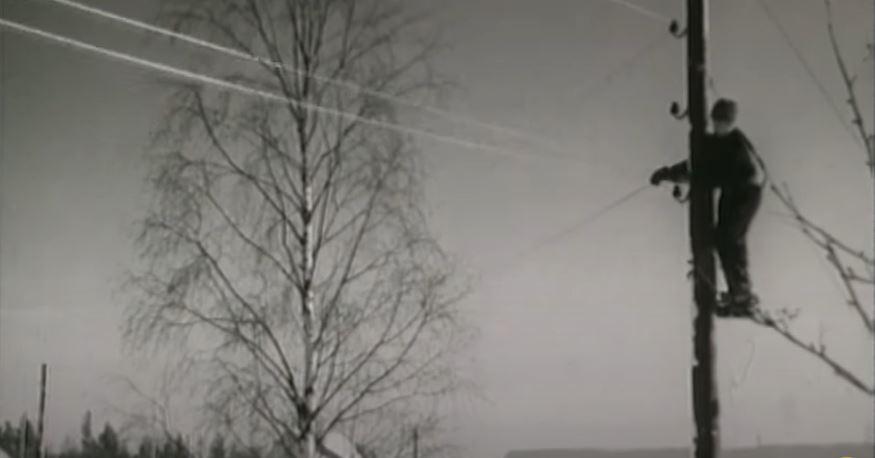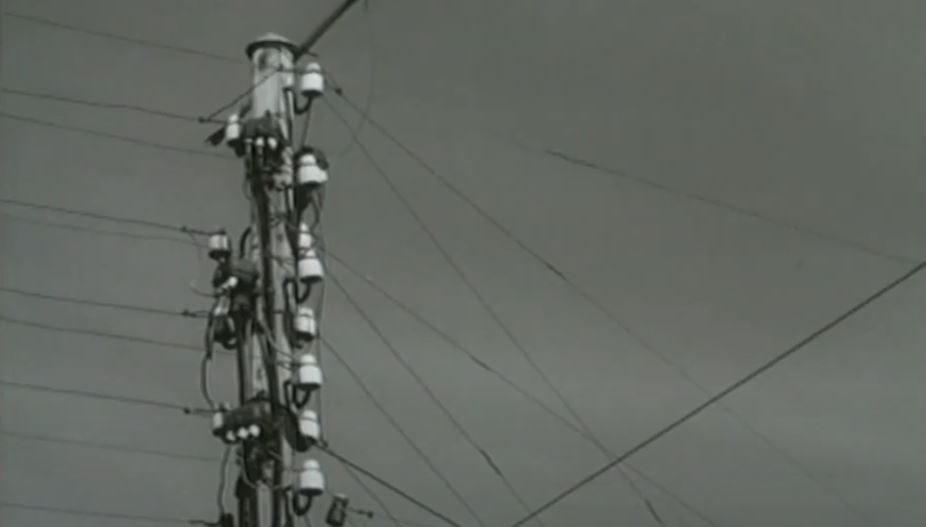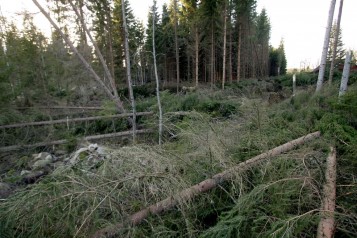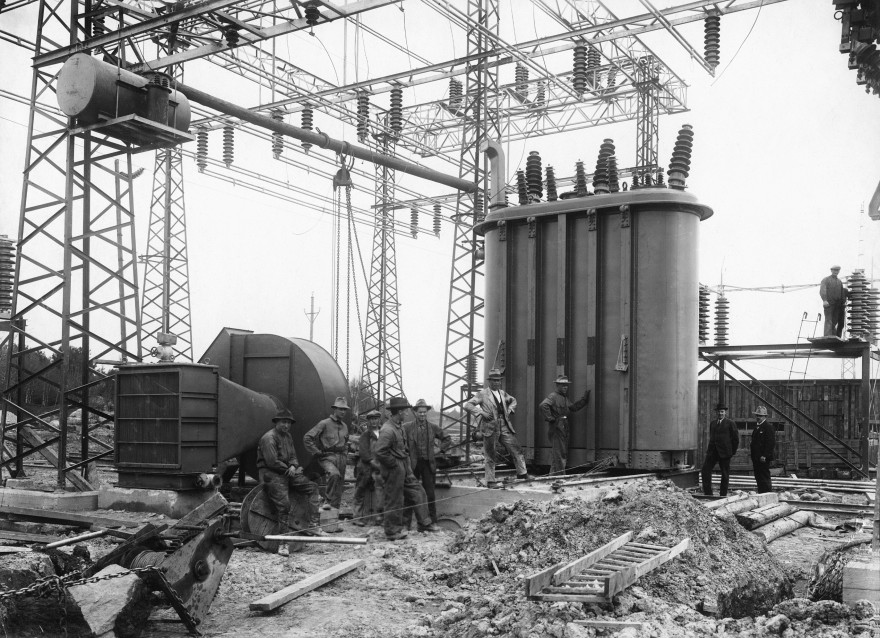
Power distribution – the physical link to the customer
Vattenfall’s operations were concentrated initially on the expansion of hydroelectric power, a national grid and regional networks. The local distribution of electricity to customers was left to the electricity distribution associations and municipal power companies. But Vattenfall’s commitment to local electricity networks grew and today about 18 per cent of the country’s electricity customers are connected to Vattenfall’s electrical grid. But it has not been easy to achieve good regulation of the power grid monopoly.
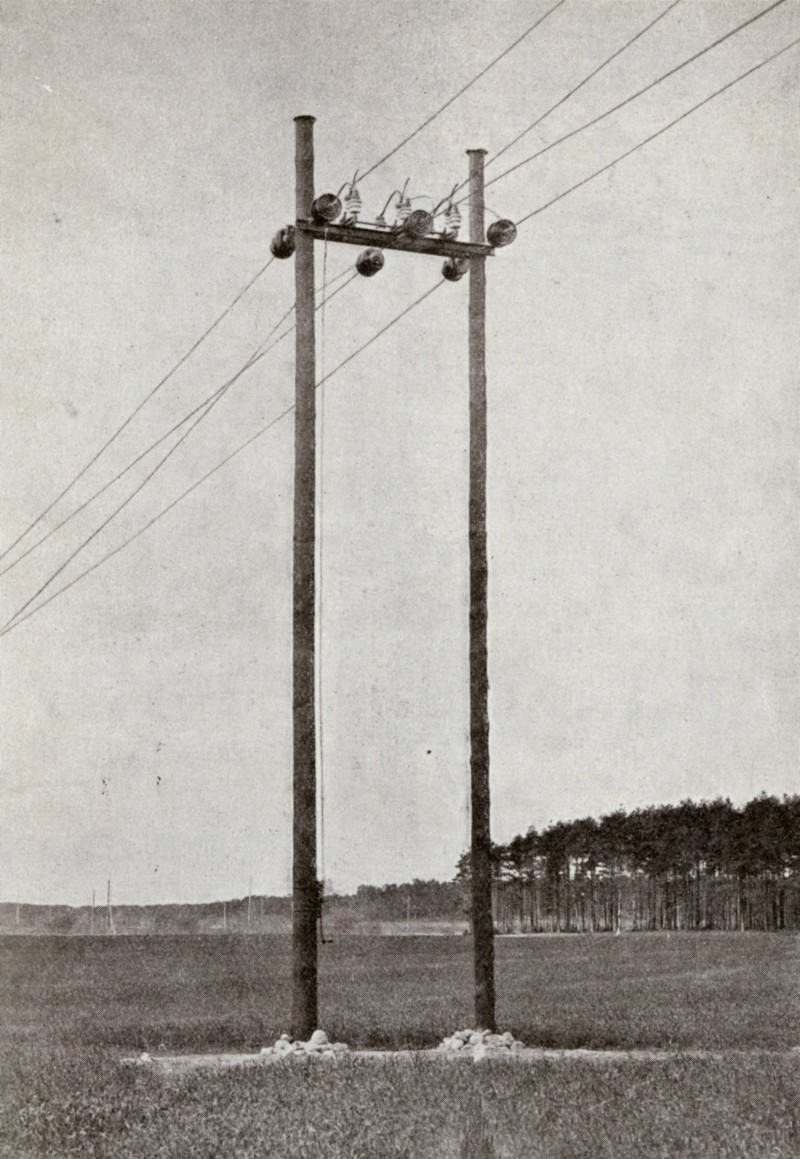
Trollhättan, 10 kV line separator. From the book 'Statens kraftverk 1921: allmän beskrivning'. Year: 1921 | Place: Trollhättan | Creator: Okänd | ID: VF001032
Prior to 1930, Vattenfall had very few low-voltage customers. But in order to improve hydroelectric power production at Motala Ström, it purchased Motala Ströms Kraft AB and gained its 25,000 customers into the bargain. At that time there were more than 3,500 electricity distribution companies, most of them very small. They were usually doing poorly financially, and when customer demands for safe electricity supply grew, they struggled to invest in stronger electrical grids. The result was that Vattenfall and other large companies took over power distribution. By 1960, therefore, Vattenfall’s customer base had increased to around 130,000.
During the 1960s and especially the 1970s, governments pushed structural change in the distribution of electricity. In 1975, the government-appointed Electricity Commission (Elutredningen) suggested that an appropriate number of customers for an electricity distribution company was 50,000-75,000, i.e. 50-80 companies for the whole of Sweden, rather than the 800 or so in existence at that time. Larger companies would mean that economies of scale could be exploited and that electricity prices in rural and urban areas could be equalised. It was assumed that municipalities would take main responsibility for the restructuring, but Vattenfall was also assigned a role.
Structural rationalisation gains momentum after deregulation of the electricity market
But not much happened. In 1990, there were still around 350 distribution companies. And Vattenfall had no more than about 550,000 customers, which was 11 per cent of the country’s total electricity customers. But in the early 1990s it was clear that the electricity market needed to be deregulated. Now feverish activity began among the larger companies in order to increase their retail market. Many people thought there would now be a genuine structural rationalisation. In the 1990s, Vattenfall also acquired 50 per cent more customers through the purchase of distribution companies than it did during the previous 60-year period, 1930-1990. The market share rose to the current 18 per cent. But despite Vattenfall’s and others’ acquisitions, there are still about 160 electricity grid companies in Sweden, i.e. more than twice as many as the Electricity Commission’s target in 1975.
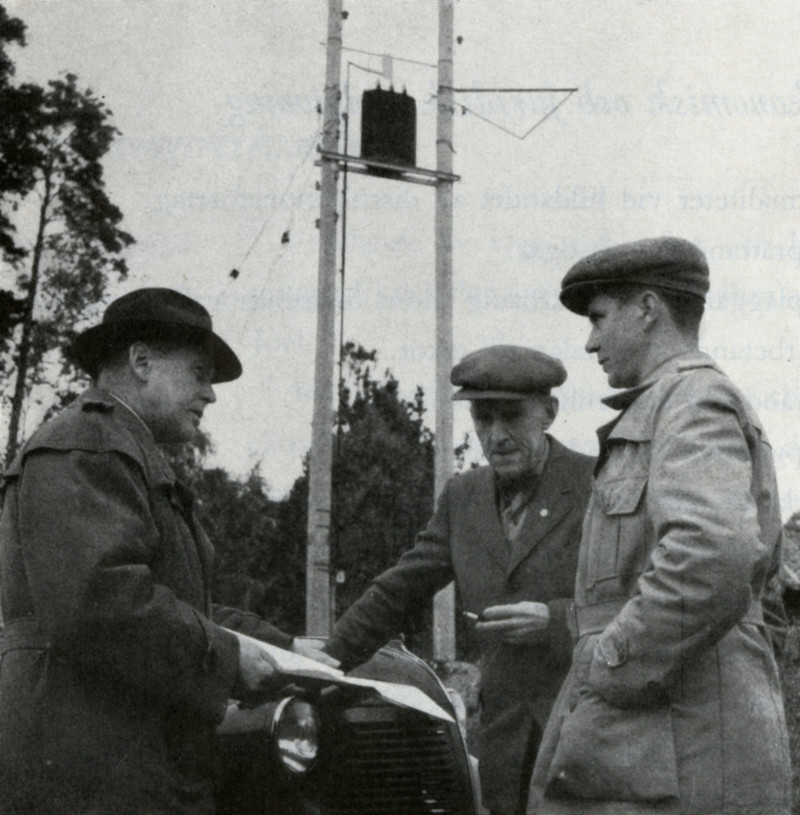
Vattenfall gives advice to a local distribution association. From the brochure 'Vattenfallsstyrelsen och distributionsföreningarna'. Year: 1948 | Place: - | Creator: Vattenfall | ID: VF001048
During deregulation, the electricity grids, which are monopoly activities, were separated from the competitive electricity production and sales to customers. Ownership, operation and development of electricity grids now became a more distinct separate business. Vattenfall had streamlined operations through economies of scale by 2004, forming a single network company of what was as recently as the early 1990s just over 25 companies. Furthermore, the business was split into an ownership function and a contracting business, and Vattenfall purchased more external services.
Regulating a monopoly such as electricity grids
The electricity grid companies formed by deregulation of the electricity market in 1996 are monopolies, and monopolies need to be regulated. It was not so easy to achieve good regulation because Sweden, unlike most other countries, did not have any authority with experience in regulating the electricity industry. The current regulatory body, The Swedish Energies Market Inspectorate (Ei), had a slow start. It was a challenge to start regulating an entire industry with limited resources and without proven methods. The Inspectorate therefore decided in its initial years to just examine companies that increased their prices. The result was that the companies with high profitability at the time of deregulation could retain their position as long as they did not raise prices. However, companies with low profitability were subject to tough scrutiny if they wanted to increase their prices in order to achieve reasonable profitability.
In order to bring order to regulation, a brand new model was introduced in 2003. Companies would be judged according to the benefit they delivered to customers. A very complex model, the grid benefit model, was created to enable accurate assessments. Vattenfall’s position was that the principle of assessing benefit was sound, and the company became involved in the development. However, the Inspectorate had its own ideas about establishing important values. When it turned out that the model was too complex and could give widely varying results from one year to the next, the grid companies lost confidence in the method and appealed against the revenue frameworks that had been assigned. A negotiated settlement was reached in 2008, which for Vattenfall meant unchanged revenue. The grid benefit model was abandoned as an approach to regulation.

Distribution plant ID: VF000162
There then followed a time with a preliminary regulation model that was gradually adjusted to the new ‘advance’ regulation model that came into force in 2012. This was the result of an EU requirement that Sweden, as the last country, sign up to the principle of regulation of grid fees in advance instead of in arrears, as had been the case. The new advance regulation model, if it were applied fully, would involve significant price increases for local grid customers. The Inspectorate therefore introduced a long transition period before the new regulation would take full effect. The industry felt that this was contrary to the Electricity Act and appealed against the transition model and certain other parameters in the model. The grid companies won the lawsuit. The Inspectorate subsequently agreed on a new regulation model for 2016 onwards.
Electricity grid operations are a long-term business that requires stable rules. It is essential for customers and industry players that the regulatory authority develops a fair, stable and long-term effective regulation model.
Video player requires marketing cookies.
To view this content please click here to allow marketing cookies.
Electricity distribution in the countryside in 1956 (in Swedish)
Video player requires marketing cookies.
To view this content please click here to allow marketing cookies.
Vattenfall supports cooperative distribution associations in 1955 (in Swedish)

